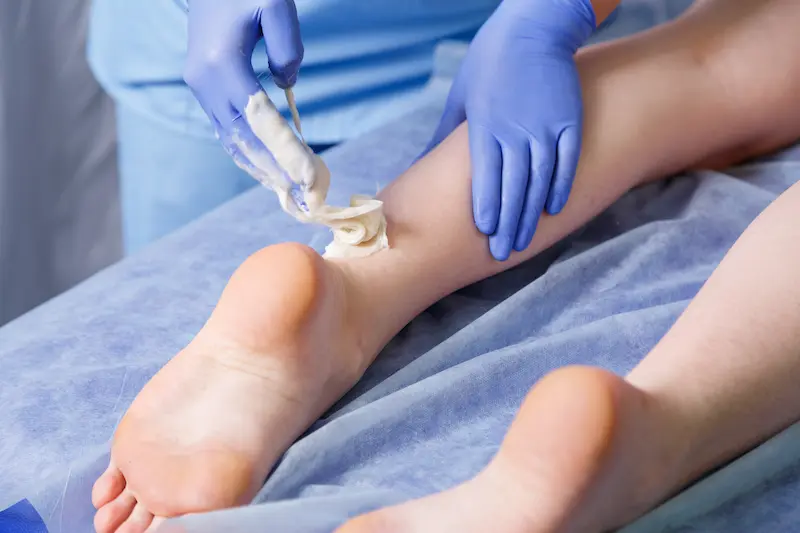Partial Achilles tendon tears and tendon tears in patients with minimal displacement can be treated conservatively with walking boot and wedges. The number of wedges will have to be gradually reduced over a period of 6 to 12 weeks to get the foot plantigrade. However, the push off strength of the achilles tendon and calf muscle may not return to the pre-injury level.
In people with acute tear of the muscle and in those with a large gap between the two ends of the torn achilles tendon, surgical treatment is appropriate. Surgical treatment may be percutaneous through small cuts in some. The technique permits mobilisation of the tendon and fixation in some, however there is a higher risk of nerve injuries in these.
Diagnosis
With good physical examination, the Achilles tendon tear can be identified easily due to the gap in the tendon. However, in partial tears and in tears higher up at the musculo-tendinous junction may be difficult to appreciate with the clinical examination.
Treatment
First Aid for Achilles injuries involves the typical R.I.C.E therapy initially (Rest, Icepacks, Compression and Elevation).
Partial Achilles Tear / Degenerative Achilles Tear (Acute)
Partial Achilles tears and degenerative tears can be treated conservatively provided the patient is seeking medical attention in the initial few weeks post injury. A walking boot with wedges for 6 to 12 weeks is necessary. The results can be satisfactory provided the patient is not into active sports or high intensity activities.
Achilles Tendon Surgery
Achilles Repair Surgery Rehabilitation
Post-surgery you can expect to be in a walking boot with wedges initially. Early mobilisation is recommended. Depending on the type of repair you may need to use the walking boot for 4 to 8 weeks. Full mobility is expected by 6 to 8 weeks. To get back to running and other high impact activities usually around 6 to 8 months of time period is necessary.

